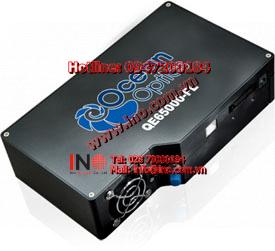The QE65000 Scientific-grade Spectrometer is a novel combination of detector, optical bench and electronics technologies that provides users with a remarkably sensitive system for demanding low-light level applications such as fluorescence, DNA sequencing, astronomy and Raman spectroscopy. The QE65000 can achieve up to 90% quantum efficiency with high signal-to-noise and rapid signal processing speed.
The great performance of our QE65000 Spectrometer has been enhanced to provide even more value: lower stray light, improved efficiency in the UV and Shortwave NIR, and better unit-to-unit reproducibility. For full UV-Shortwave NIR coverage, you'll want to configure your QE65000 with our HC-1 composite grating.
When purchased with the Remora Network Adapter users can communicate with the QE65000 over Ethernet or Wi-Fi. Use with SpectraSuite Software, and turn your device into a network accessible spectrometer. Remotely capture spectral data from anywhere Plus, Remora allows multiple users to access data and experiment settings without the need for additional equipment. Remora's web-interface works with all popular web browsers and allows you to monitor data from a PDA, iPhone, and most internet ready devices
The QE65000 Spectrometer is a great option for low-light level applications including fluorescence, Raman spectroscopy, DNA sequencing, astronomy and thin-film reflectivity. The TE-cooled (down to -15 °C) detector features low noise and low dark signal, which enables low-light-level detection and long integration times (analogous to the shutter speed of a camera) from 8 milliseconds to 15 minutes, with virtually no spectral distortion.
The QE65000 also has an onboard programmable micro-controller for controlling the spectrometer and accessories. You have access to 10 user-programmable digital inputs/outputs and a pulse generator for triggering other devices. You can use the I/Os to flash a lamp, stop/start a process, and send a message/alarm during the spectrometer’s integration period. The spectrometer’s operating parameters can be controlled through software. In fact, wavelength calibration coefficients unique to each spectrometer are programmed into a memory chip right on the spectrometer.




















